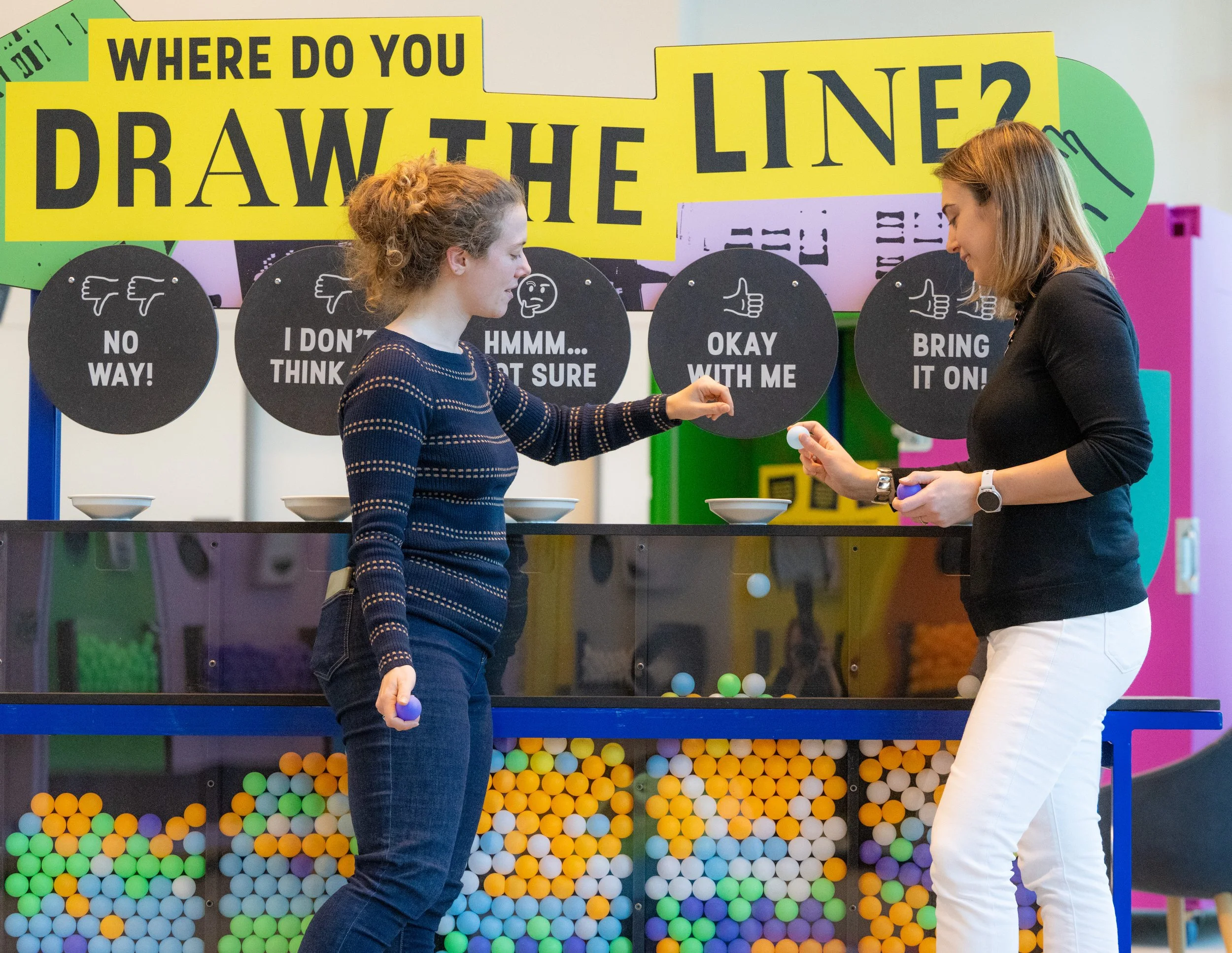What did we do?
In order to bring this important and compelling topic to life, we worked closely with the Institute’s researchers to ascertain what science information they felt needed to be shared with the public. We also spoke to local communities and potential visitors to find out their questions and concerns regarding the topic.
Armed with this knowledge, we developed an interactive exhibition that took visitors on a journey through a series of zones. This began by considering the effects of genome editing on a personal level – how its application would alter the traits you pass down to your offspring, for example – before opening it up to broader societal issues, posing the question ‘Where would you draw the line?” when it comes to critical ethical issues around the possible applications of genome editing to address global challenges, such as climate change and malaria.
The exhibition title, Cut + Paste, was devised to be an analogy of the literal cutting and pasting ‘Crispr’ process of genome editing, and we extended this concept throughout the exhibition by incorporating collage elements and bite-sized information to create a visual world that was both scientific and playful.
Visitors became part of a living, breathing exhibition by interacting through games based on the technology, such as ‘rolling the dice’ or playing with ‘building blocks’. Activities were designed to be both empowering and inspiring, providing visitors with scientific information and posing ethical and moral questions in a unique and engaging way.
We created a number of inventive ways to gather audience feedback so that a large volume of useful information could be passed on to The Crick’s scientists in order to further their understanding of public attitudes. Visitors were also invited to leave their thoughts and opinions on display or through audio feed-in to create a highly visible ever-growing body of talking points that stimulated further public debate.
Through these methods we presented a complex and ethically challenging topic on a human level, whilst creating an accessible and engaging installation that adhered to the topic’s sensitivities and preserved the Institute’s integrity and reputation.
The Cut + Paste exhibition ran from February to December 2023.

